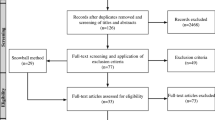Abstract
We investigate formal analysis of two aspects of usability in a deployed interactive, configurable and context-aware system: an event-driven, sensor-based homecare activity monitor system. The system was not designed from formal requirements or specification: we model the system as it is in the context of an agile development process. Our aim was to determine if formal modelling and analysis can contribute to improving usability, and if so, which style of modelling is most suitable. The purpose of the analysis is to inform configurers about how to interact with the system, so the system is more usable for participants, and to guide future developments. We consider redundancies in configuration rules defined by carers and participants and the interaction modality of the output messages.Two approaches to modelling are considered: a deep embedding in which devices, sensors and rules are represented explicitly by data structures in the modelling language and non-determinism is employed to model all possible device and sensor states, and a shallow embedding in which the rules and device and sensor states are represented directly in propositional logic. The former requires a conventional machine and a model-checker for analysis, whereas the latter is implemented using a SAT solver directly on the activity monitor hardware. We draw conclusions about the role of formal models and reasoning in deployed systems and the need for clear semantics and ontologies for interaction modalities.













Similar content being viewed by others
Notes
A short meaningful audio segment.
References
Bettini C, Brdiczka O, Henricksen K, Indulska J, Nicklas D, Ranganathan A, Riboni D (2010) A survey of context modelling and reasoning techniques. Pervasive Mobile Comput 6(2):161–180
Coronato A, DePietro G (2009) Formal specification of a safety critical pervasive application for a nuclear medicine department. IEEE International Conference on Advanced Information Networking and Applications Workshops. pp 1043–1048
Cerone A, Elbegbayan N (2007) Model-checking driven design of interactive systems. Electron Notes Theor Comput Sci 183:3–20
Calder M, Gray P, Unsworth C (2009) Tightly coupled verification of pervasive systems. Proceedings of the Third International Workshop on Formal Methods for Interactive Systems (FMIS 2009), Electronic Communications of the EASST
Campos JC, Harrison MD (1997) Formally verifying interactive systems: a review. In Design, Specification and Verification of Interactive Systems 97, Springer, pp 109–124
Campos JC, Harrison MD (2008) Systematic analysis of control panel interfaces using formal tools. In XVth International Workshop on the Design, Verification and Specification of Interactive Systems (DSV-IS 2008), volume 5136 of Lecture Notes in Computer Science, Springer, Berlin pp 72–85
Curzon P, Rŭkėnas R, Blandford A (2007) An approach to formal verification of human-computer interaction. Formal Aspects of Computing pp 513–550
Eén N, Sörensson N (2003) An extensible SAT-solver. In: Enrico Giunchiglia, Armando Tacchella (eds) SAT. Springer, vol 2919, pp 502–518
Karen Henricksen, Jadwiga Indulska (2006) Developing context-aware pervasive computing applications: models and approach. Pervasive Mobile Comput 2:37–64
Holzmann GJ (2003) The SPIN model checker: primer and reference manual. Addison Wesley, Boston
Jake project. http://code.google.com/p/jake-drivers/
Jones Cliff B, Daniel Jackson, Jeannette Wing (1996) Formal methods light. Computer 29(4):20–22
Kristoffersen S (2009) A preliminary experiment checking usability principles with formal methods. IEEE Second International Conference on Advances in Computer-Human Interactions, pp 261–270. doi:10.1109/ACHI.2009.26
Markopoulos P, deRuyter B, Mackay WE (2009) Awareness systems: advances in theory. Methology and design. Springer, Berlin
McBryan T, Gray P (2009) User configuration of activity awareness. Lecture Notes Computer Sci 5518:748–751
Rŭkėnas R, Back J, Curzon P, Blandford A (2008) Formal modelling of salience and cognitive load. ENTCS 57–75
Riche Y, Mackay WE (2007) Markerclock: A communicating augmented clock for the elderly. Proc. Interact 07. Part II. Lecture Notes Comput Sci 4663:408–411
Shake users group. http://www.dcs.gla.ac.uk/research/shake/
Kenneth J. Turner, Gavin A. Campbell, Feng Wang (2007) Policies for sensor networks and home care networks. In: Mohammed Erradi (ed) Proc. 7th. Int. Conf. on New Technologies for Distributed Systems pp 273–284
Turner KJ (2012) Results of The MATCH Project. Advances in Home Care Technologies. IOS Press
Williamson J, Murray-Smith R, Hughes S (2007) Shoogle: excitatory multimodal interaction on mobile devices. Proc. SIGCHI Conference on Human Factors in. Comput Syst 4663:121–124
Wang F, Turner K (2008) Policy conflicts in home care systems. Proc. 9th Int. Conf. on Feature Interactions in Software and Communications Systems pp 54–65
Acknowledgments
This research was supported by the VPS project (Verifying interoperability in pervasive systems), funded by the Engineering and Science Research Council (EPSRC) under grant number EP/F033206/1. We also acknowledge support from the MATCH Project, funded by the Scottish Funding Council under grant HR04016.
Author information
Authors and Affiliations
Corresponding author
Rights and permissions
About this article
Cite this article
Calder, M., Gray, P. & Unsworth, C. Is my configuration any good: checking usability in an interactive sensor-based activity monitor. Innovations Syst Softw Eng 11, 131–142 (2015). https://doi.org/10.1007/s11334-013-0203-1
Received:
Accepted:
Published:
Issue Date:
DOI: https://doi.org/10.1007/s11334-013-0203-1




